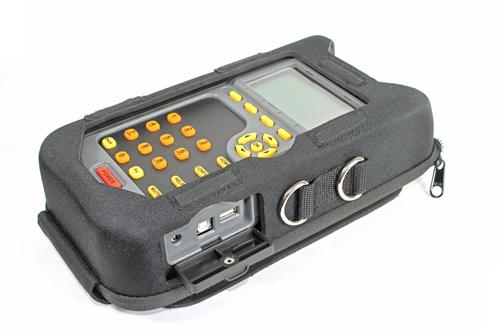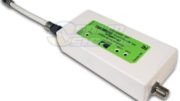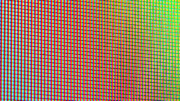You’re not going to like this, but if you’re planning to install a 4K dish using the Reverse Band 3 LNB, you’re going to either need this AIM meter or you’ll need to find a workaround. Believe it or not it’s not the most expensive satellite meter we sell, but it’s pretty pricey. The AIM is the only meter in the world that will decode the DIRECTV digital SWM signals that come from the new 4K hardware, and that means if you’re going to be setting up a lot of 4K dishes, you’ll need one. It’s a good work investment, trust me it’s my meter of choice for serious installs.
If you’re not ready to invest that kind of money in a new meter, well I don’t blame you, and the good news is there are two possibilities for you that will help you get that new dish up and running.
The lowest cost option is simply to use the built-in satellite meter on your receiver or DVR. This is also going to be the slowest method, as the numbers on the screen are slow to change and unless you have the TV very close to the dish you’ll need a second person or some other way to see the screen. I don’t recommend this unless you have a lot of time and maybe this is a one-time thing for you.
The other option, and I know a lot of satellite installers who do this, is to actually carry an old-style LNB with you. You can pick one of these up fairly inexpensively and then you can use practically any satellite meter (for example our well-reviewed Satlooklite) to do the hard work. I personally recommend picking up a non-SWM, 5-location LNB rather than any of othe other choices because it’s going to let you make the most precise aim possible and it’s compatible with the most meters.
Once everything is tightened down, connect the new LNB, connect the dish to a receiver and use those meters for the very last adjustments. Even if you buy the LNB at full price, it’s still cheaper than buying an expensive satellite meter. If you’re an installer, you’ll use this LNB time and time again so it will pay for itself.
DIRECTV wasn’t trying to force you into an expensive meter, that wasn’t the goal here. Perhaps at some point you’ll see other manufacturers that can read the digital SWM signal as well, but since about 99.5% of the people who put up DIRECTV dishes are their own installers, the goal was to make sure that everyone was using the same equipment, and to use the highest possible level of technology on the dishes. Third parties just haven’t caught up yet.





